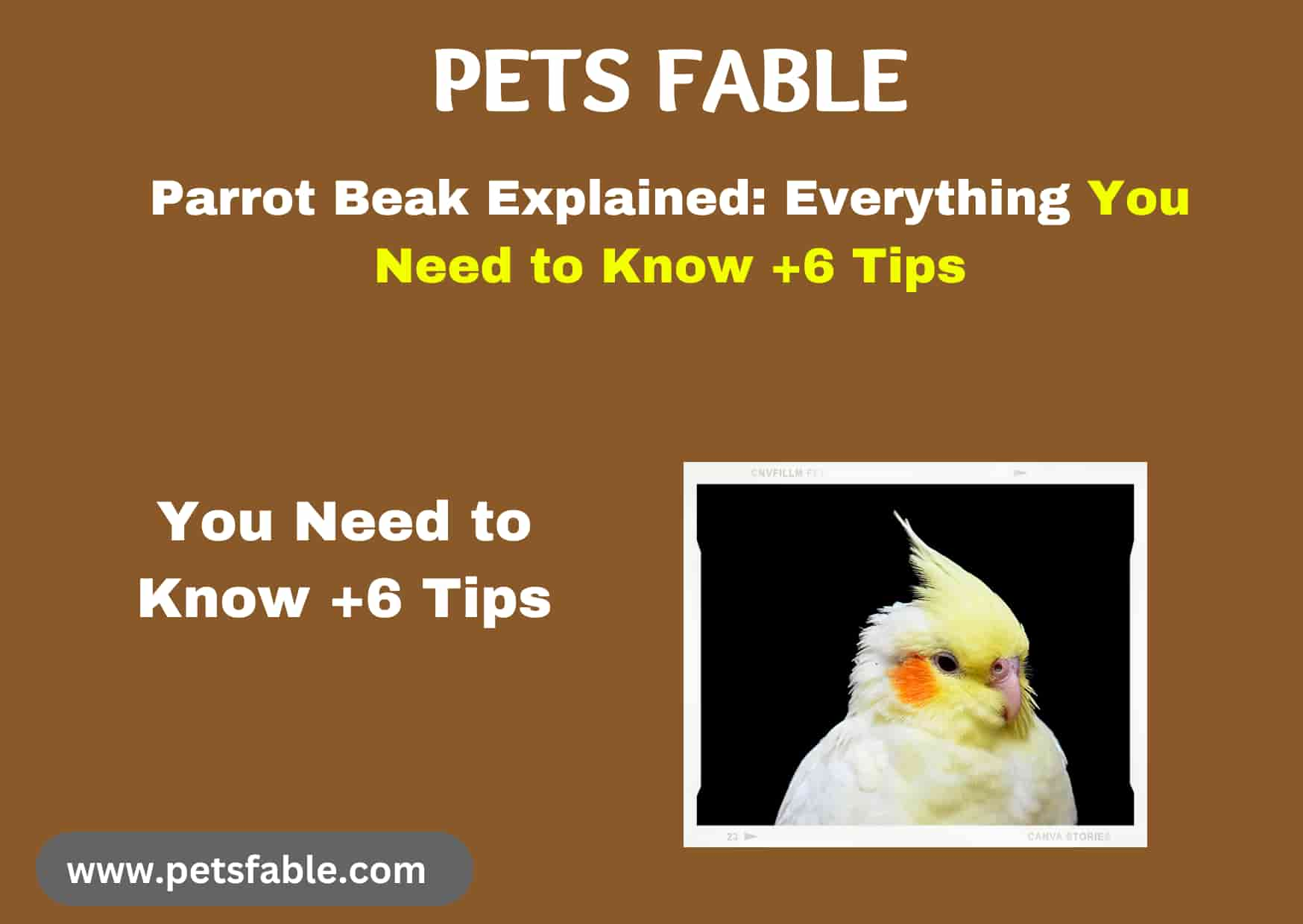Parrot Beak Anatomy:
Parrots are fascinating creatures, known for their unique appearance and behaviors. One of the most distinctive features of parrots is their hooked beak, which plays a crucial role in many of their daily activities.
Understanding the structure of a parrot’s beak is essential for proper care, as it affects how they eat, interact, and communicate. In this guide, we’ll explore the anatomy of a parrot’s beak, its functions, and tips for maintaining a healthy beak.
Key Parts of a Parrot’s Beak
A parrot’s beak consists of several key structures, each playing a vital role in its function. These include the maxilla, mandible, rhamphotheca, cere, and nares.
1. Maxilla (Upper Beak)
The maxilla is the upper jaw of the parrot, which is flexible and moves independently of the lower jaw. This allows parrots to manipulate food, crack open nuts, and engage in activities like climbing. The maxilla is covered by a keratinous sheath called the rhinotheca.

The flexibility of the maxilla is one of the key features that make parrots’ beaks so efficient at handling food and interacting with objects in their environment.
2. Mandible (Lower Beak)
The mandible, or lower beak, is essential for gripping, crushing, and manipulating food. It works in tandem with the maxilla, providing the strength needed to hold onto food, climb, and preen.
The mandible has two curved tips that act as a focal point to grip and crush food. Its alignment with the maxilla is critical for the parrot’s ability to use its beak effectively.
3. Rhamphotheca (Keratin Sheath)
The rhamphotheca is the outer covering of a parrot’s beak, made of keratin, the same material found in human nails. This keratinous covering helps protect the beak and enables it to grow and renew continuously.
The rhamphotheca is sensitive, with nerve endings beneath it, providing the parrot with tactile feedback to help them interact with their environment.
4. Cere (Beak Base)
The cere is the fleshy area at the base of the beak, where the nares (nostrils) are located. The color and condition of the cere can provide important clues about a parrot’s health, age, and even gender in some species.
For example, budgies have a bright blue cere when male, while females have a more subdued brown or pink cere.
5. Nares (Nostrils)
Parrot nares are located at the top of the cere and allow the bird to breathe. They should be clear and free from obstructions like debris. Any changes in the size or appearance of the nares, such as swelling or crusting, may indicate a health issue.
6. Egg Tooth
The egg tooth is a small, hard protrusion on the beak of baby parrots. It helps them break through the eggshell during hatching. After hatching, the egg tooth falls off or is absorbed back into the beak.
Functions of a Parrot Beak
The parrot’s beak is incredibly versatile, serving many important functions:
- Eating: The hooked shape helps parrots crack seeds, nuts, and fruits.
- Drinking: Parrots scoop water into their beaks to drink.
- Climbing: The beak is used to grip and navigate their environment, especially in the wild.
- Preening: Parrots use their beaks to clean and maintain their feathers.
- Communication: They can also use their beaks for vocalizing and expressing emotions.
- Defense: In the wild, parrots may use their beaks to protect themselves from predators.

How to Identify a Healthy Parrot Beak
A healthy parrot beak is essential for a bird’s overall well-being. Here’s how to identify a healthy beak:
- The upper and lower beaks should align properly without any gaps or misalignment.
- The beak should not be excessively long or too short.
- There should be no cracks, bumps, or holes on the beak.
- The beak should have a smooth, natural appearance with no deep scratches or abnormal discoloration.
- There should be no signs of bleeding, bruising, or pain.
Regularly inspect your parrot’s beak to ensure it’s in good condition and functioning properly.
Common Beak Health Conditions
While Parrot Beak are generally hardy birds, certain health issues can affect their beaks. These may include:
- Beak overgrowth: Can be caused by poor diet or lack of natural wear.
- Beak malformations: May occur in some birds, requiring veterinary care.
- Infections or injuries: Cracks, abrasions, or infections can interfere with a parrot’s ability to feed, groom, or defend itself.
If you notice any abnormalities or discomfort in your bird’s beak, it’s important to seek professional veterinary advice.
Final Thoughts
Understanding parrot beak anatomy is essential for all parrot owners. By recognizing the different parts of the beak and how they function, you can better care for your bird and ensure it remains healthy.
Regularly checking for signs of beak damage or misalignment can help catch potential issues early. A healthy beak is crucial for your parrot’s ability to eat, preen, and communicate—all key to a happy, healthy life.
